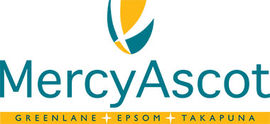Central Auckland, East Auckland, South Auckland, West Auckland, North Auckland > Private Hospitals & Specialists > MercyAscot >
MercyAscot Cardiothoracic Surgery
Private Surgical Service, Cardiothoracic Surgery
Consultants
-

Mr Peter Alison
Cardiothoracic Surgeon
-

Dr Christine Goh
Cardiothoracic Surgeon
-

Mr Parma Nand
Cardiothoracic Surgeon
-

Dr Tharumenthiran (Indran) Ramanathan
Cardiothoracic Surgeon
-

Mr Amul Sibal
Cardiothoracic Surgeon
Procedures / Treatments
When the arteries that supply the heart with blood (coronary arteries) become blocked with fatty substances, surgery may be required to restore blood flow to the heart muscle. Coronary Artery Bypass Surgery uses pieces of arteries from the arm or chest or from veins in the leg to create a detour around the blocked coronary artery. The procedure involves making a cut through the front of the chest and breastbone (sternotomy) to expose the heart. The heart is then stopped and its function taken over by a heart-lung machine. Once the new blood vessels are in place, the heart is restarted, the heart-lung machine disconnected and the breastbone closed with wires. The operation usually takes between three and five hours.
When the arteries that supply the heart with blood (coronary arteries) become blocked with fatty substances, surgery may be required to restore blood flow to the heart muscle. Coronary Artery Bypass Surgery uses pieces of arteries from the arm or chest or from veins in the leg to create a detour around the blocked coronary artery. The procedure involves making a cut through the front of the chest and breastbone (sternotomy) to expose the heart. The heart is then stopped and its function taken over by a heart-lung machine. Once the new blood vessels are in place, the heart is restarted, the heart-lung machine disconnected and the breastbone closed with wires. The operation usually takes between three and five hours.
When the arteries that supply the heart with blood (coronary arteries) become blocked with fatty substances, surgery may be required to restore blood flow to the heart muscle.
Coronary Artery Bypass Surgery uses pieces of arteries from the arm or chest or from veins in the leg to create a detour around the blocked coronary artery. The procedure involves making a cut through the front of the chest and breastbone (sternotomy) to expose the heart. The heart is then stopped and its function taken over by a heart-lung machine. Once the new blood vessels are in place, the heart is restarted, the heart-lung machine disconnected and the breastbone closed with wires. The operation usually takes between three and five hours.
There are four major heart valves that control blood flow through the heart. If the valves become narrow (stenosis) so that blood flow through them becomes difficult, or leaky so that some blood flows in the wrong direction, they may need to be repaired or replaced. Valves may be damaged by diseases such as rheumatic fever or bacterial infection, degenerate with age or may not be formed properly at birth. Heart valve surgery involves making a cut through the front of the chest and breastbone (sternotomy) to expose the heart. The heart is then stopped and its function taken over by a heart-lung machine. Part of the heart is then opened and the valve repaired or possibly replaced using a human donor valve, a valve from a pig or cow or an artificial valve. The heart is then restarted, the heart-lung machine disconnected and the breastbone closed with wires. The operation usually takes between three and five hours.
There are four major heart valves that control blood flow through the heart. If the valves become narrow (stenosis) so that blood flow through them becomes difficult, or leaky so that some blood flows in the wrong direction, they may need to be repaired or replaced. Valves may be damaged by diseases such as rheumatic fever or bacterial infection, degenerate with age or may not be formed properly at birth. Heart valve surgery involves making a cut through the front of the chest and breastbone (sternotomy) to expose the heart. The heart is then stopped and its function taken over by a heart-lung machine. Part of the heart is then opened and the valve repaired or possibly replaced using a human donor valve, a valve from a pig or cow or an artificial valve. The heart is then restarted, the heart-lung machine disconnected and the breastbone closed with wires. The operation usually takes between three and five hours.
Heart valve surgery involves making a cut through the front of the chest and breastbone (sternotomy) to expose the heart. The heart is then stopped and its function taken over by a heart-lung machine. Part of the heart is then opened and the valve repaired or possibly replaced using a human donor valve, a valve from a pig or cow or an artificial valve. The heart is then restarted, the heart-lung machine disconnected and the breastbone closed with wires. The operation usually takes between three and five hours.
Sometimes people are born with abnormalities of the heart or major blood vessels. Surgery may be required to repair these defects and may be performed during childhood or left until adulthood. Congenital heart surgery can involve: Repairing the abnormality e.g. repairing defects in the internal walls of the heart with stitches or a patch made from the patient's own tissue or from an artificial source or A procedure that will make the patient feel more comfortable but that will not necessarily correct the defect e.g. inserting a tube to connect the aorta to the pulmonary artery to increase the blood flow to the lungs.
Sometimes people are born with abnormalities of the heart or major blood vessels. Surgery may be required to repair these defects and may be performed during childhood or left until adulthood. Congenital heart surgery can involve: Repairing the abnormality e.g. repairing defects in the internal walls of the heart with stitches or a patch made from the patient's own tissue or from an artificial source or A procedure that will make the patient feel more comfortable but that will not necessarily correct the defect e.g. inserting a tube to connect the aorta to the pulmonary artery to increase the blood flow to the lungs.
Sometimes people are born with abnormalities of the heart or major blood vessels. Surgery may be required to repair these defects and may be performed during childhood or left until adulthood.
Congenital heart surgery can involve:
- Repairing the abnormality e.g. repairing defects in the internal walls of the heart with stitches or a patch made from the patient's own tissue or from an artificial source or
- A procedure that will make the patient feel more comfortable but that will not necessarily correct the defect e.g. inserting a tube to connect the aorta to the pulmonary artery to increase the blood flow to the lungs.
An aneurysm is a weak, bulging area that can develop on the wall of a blood vessel particularly in the aorta, the large artery that carries blood from the heart for delivery to the rest of the body. Once an aneurysm has been identified, surgery may be performed to avoid the danger of the aneurysm bursting. Aortic aneurysm surgery involves either: Open chest surgery in which the part of the aorta with the aneurysm is removed and replaced with an artificial graft or Insertion of a stent graft (an artificial tube) at the site of the aneurysm so that blood can flow through the tube and bypass the aneurysm. This is a less invasive procedure and involves small cuts or incisions in the upper thigh.
An aneurysm is a weak, bulging area that can develop on the wall of a blood vessel particularly in the aorta, the large artery that carries blood from the heart for delivery to the rest of the body. Once an aneurysm has been identified, surgery may be performed to avoid the danger of the aneurysm bursting. Aortic aneurysm surgery involves either: Open chest surgery in which the part of the aorta with the aneurysm is removed and replaced with an artificial graft or Insertion of a stent graft (an artificial tube) at the site of the aneurysm so that blood can flow through the tube and bypass the aneurysm. This is a less invasive procedure and involves small cuts or incisions in the upper thigh.
An aneurysm is a weak, bulging area that can develop on the wall of a blood vessel particularly in the aorta, the large artery that carries blood from the heart for delivery to the rest of the body.
Once an aneurysm has been identified, surgery may be performed to avoid the danger of the aneurysm bursting. Aortic aneurysm surgery involves either:
- Open chest surgery in which the part of the aorta with the aneurysm is removed and replaced with an artificial graft or
- Insertion of a stent graft (an artificial tube) at the site of the aneurysm so that blood can flow through the tube and bypass the aneurysm. This is a less invasive procedure and involves small cuts or incisions in the upper thigh.
Disability Assistance
Wheelchair access, Mobility parking space
Parking
Mobility parking and wheelchair access are available. Click on the link for details at Mercy Hospital
Website
Contact Details
Mercy Hospital, 98 Mountain Road, Epsom, Auckland
Central Auckland
Website
(09) 623 5700
(09) 623 5701
Fax (09) 623 5702 consumer services
98 Mountain Road
Epsom
Auckland
Street Address
98 Mountain Road
Epsom
Auckland
Postal Address
PO Box 9911
Newmarket
Auckland 1149
Was this page helpful?
This page was last updated at 11:44AM on August 1, 2022. This information is reviewed and edited by MercyAscot Cardiothoracic Surgery.

